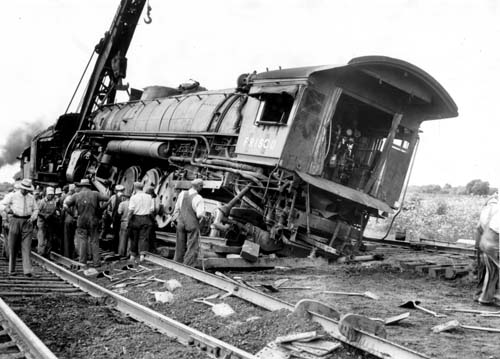I’ve tried in the past to highlight each class I’m taking in my posts by addressing particular issues that pushed my buttons, and this multi-part post is thanks to American Legal History (ALH) with Professor Seipp and Corporations with Professor Marx (sic). Both of these are helping me better understand Western culture—which is to say, despite being born in NYC, I haven’t yet fully absorbed how centrally motivating profitability is, not just in a greedy sense of dying with the most toys, but in the basic American-dream association of profitability with security and social progress.
In ALH, we looked at the law of industrial accidents from corporate-shielding judicial opinions—like J. Shaw’s refusal of recovery in Farwell v. Boston and Worcester Rail Road from the railroad to an engineer who lost a hand on the job due to co-worker’s mistake—to the eventual establishment of worker’s compensation to guarantee employee recovery regardless of who was to blame for the accident. The incentives talk around the J. Shaw approach involved encouraging workers to look out for each other and police their own negligence since they know they can’t get money from the employer if another’s mistake hurts them.
I would think avoiding losing a hand is incentive enough to be careful, money aside, and today anyone would recognize that employers who create the risky jobs to begin with have to create safe systems for worker interaction; but the larger issue for me is what incentives corporations are given. The breakdown of a teamwork ethic across company strata is accelerated once workers feel like their interests are sacrificed, and here their sacrifice was real, on the altar of profitable development of a nascent railroad industry. Management was apparently doing the right thing for the greater good by saving money for reinvestment and dividends that might otherwise be siphoned by charitable giving to unfortunate engineers without right hands, or widows.
Inclusion as gaining access
If a worker is smart and talented, that person can rise through the ranks and drive US profitability while taking a nice personal cut too, right? Maybe it’s the hope that anyone of us can someday be rich that drives the everyday person’s tolerance for extreme richness. But I wonder if inclusion into that race to the top is only partial inclusion, if perhaps there are two levels of inclusion: first gaining access, then changing the terms.
Gaining access, for railroad workers, was helped by the contingency fee system, which meant that a lawyer would work for injured me without up-front payment, relying on a (significant) cut of the award if we would win and forgoing payment if we would lose. The ensuing current of continuous litigation eroded J. Shaw’s solution for industrial accidents, and for railroads, administrative oversight finally enforced safety standards. It was as if pro-development corporate-shielding set the incentive environment for a monster to grow, and regulation played the lion tamer.
The contingency fee system gave lawyers to workers, and that was inclusionary through gained access, but as that access ran its course, the general incentive structure for corporations—treating workers as expendable rather than as teammates in a corporate enterprise, in the name of profitability—was only contained not overturned. Limits arose on worker exploitation, but companies driving industry were still effectively encouraged to go right up to the limit, and everything’s permissible that’s not illegal.
Inclusion as changing the terms
The story doesn’t end there, though, because today’s norm is worker’s compensation for everyone. Every accident is covered by a fund into which employer’s pre-pay. To the extent that industries pay into different sized pots depending on how safe their industry is, with iteration of the pot size depending on how many accidents happen over time, I would feel like incentives have really turned. I don’t believe that’s how worker’s compensation works in the US, but at least I know from my 1L torts professor that industries are rewarded for becoming safer in this way in New Zealand.
This incentive structure seems like inclusion level two, changing the terms to make it expensive to devalue workers, such that they are more likely to be valued for the essential contribution to profitability that they make just by showing up to work. I can imagine an empowered worker actually wanting such a system, feeling included in that system’s definition, articulating and trusting it.
Reformed corporate incentives might relieve regulation too, if they produce companies that don’t need to be tamed because they fundamentally aren’t vicious—put otherwise, we make a cultural decision to compete in placing people before profits, so that if any sacrifice needs to be made, it’s the latter.
…
OK friends, thanks for reading. Going forward I’ll tell you about a recent UN-sponsored report on empowering poor people that I feel mixed about, a Columbian mayor-hero who ran with inclusion level two, a corporate lawyer who helped a priest help the community, and my resolve to develop a quiet interest in law for the people!



2 Comments
b greene posted on October 16, 2010 at 1:56 am
Good post bruh.
Giridhar posted on October 23, 2010 at 1:07 pm
Thought provoking reading…check out this abstract to an essay on the modern history of “labor-management” relations in baseball, publishing, and modeling…
http://www.newyorker.com/reporting/2010/10/11/101011fa_fact_gladwell
I’ll send you the article by mail